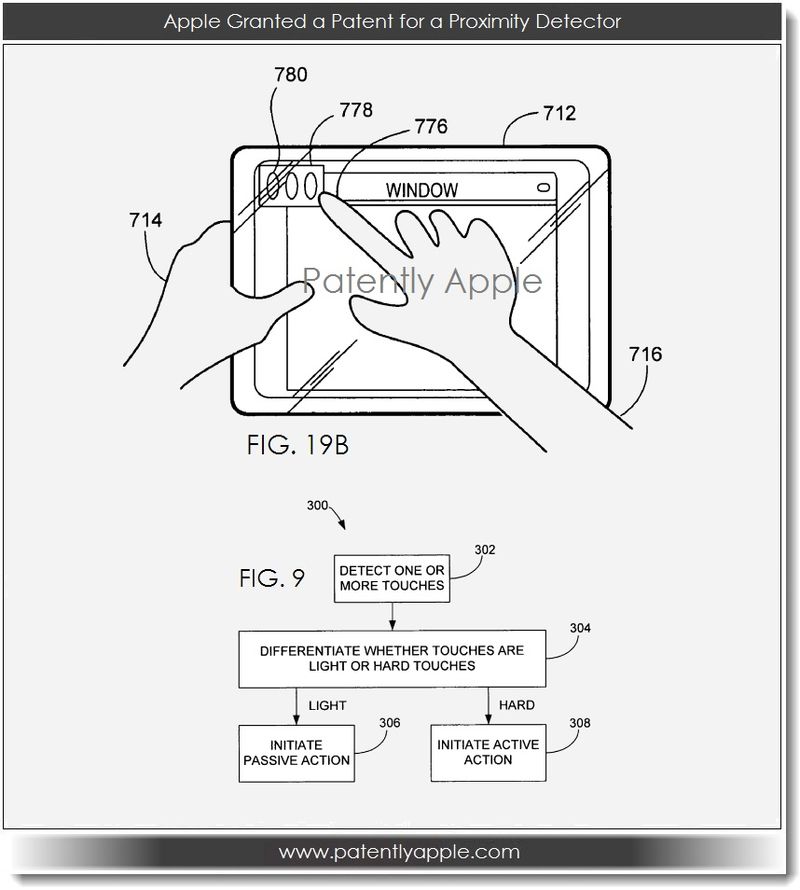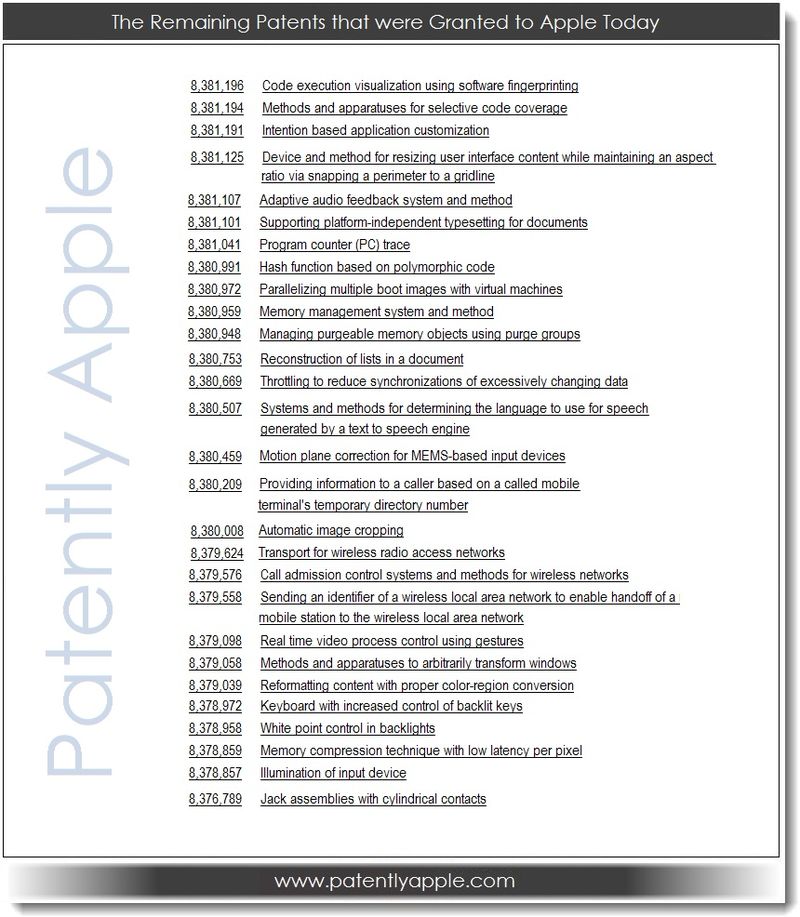Apple Granted 36 Patents; Includes Proximity Detection
iPhone maker patents Apple store packaging, a haptics feedback system and more.
Apple has been granted a total of 36 patents, including one pertaining to proximity detection for the iPhone and iPad.
The patents were approved by the U.S. Patent and Trademark Office and cover a wide range of technologies. The proximity sensor patent that was first filed in 2005 relates to technology detecting one or more touches. It is also able to differentiate whether the touches are light or hard, as well as offering other capabilities.
Apple was also granted a patent pertaining to electronic media devices and future active packaging, which allows power and data to be delivered to one or more electronic devices contained within the packaging. Another patent is a mounted shock sensor that allows an Apple Store Genius or technician to determine whether a damaged device was dropped.
Other patents predominately relate to features such as automatic image cropping, the reconstruction of lists in a document, and a haptics feedback system describing a virtual keyboard. Elsewhere, Apple was recently granted a patent for a 'smart shoe' that alerts you when it's worn down, a camera that automatically selects the best shot, and a network that uses sensors to track everything, including an individual. It also submitted a 122-page document to patent its store design.
Meanwhile, U.S. President Barack Obama has said the government is halfway from where it wants to be with patent reforms. In 2011, the smartphone industry spent $20 billion on patents, leading to -- for the first time in their history -- spending by both Apple and Google, surpassing their spending on research and development of new products. Apple's chief competitor, Samsung, lately emphasized that the iPhone maker's patent battles represents a loss for the industry and innovation.
Contact Us for News Tips, Corrections and Feedback
Get Tom's Hardware's best news and in-depth reviews, straight to your inbox.

Zak Islam is a freelance writer focusing on security, networking, and general computing. His work also appears at Digital Trends and Tom's Guide.
-
echondo You have got to be kidding me. Almost ALL of those patents have already been around and are in use for at least 5-10 years.Reply -
neon neophyte fantastic, industry is spending more money patenting technologies they didnt even come up with than on actual research and development.Reply
what a waste of humanity
china is laughing at us... seriously. -
_Cosmin_ Sure it does... it keeps prices HIGH! And that means more profit for them...since manufacturing price is very low since they are all done in Asia and apple just assemble the parts.Reply -
abbadon_34 Interesting that they need this patent in the first place, no longer can they assume an iphone is in someones pocket, and they need a way to figure that outReply -
keither5150 Too funny. I guess every device with a round audio jack will have to pay Apple.Reply
Are there any other companies that are acting like this? Google is spending a lot on patents. Are they as big a douche as Apple? I can't see one patent on the list that is new an innovative. Isn't that the point of patents?
If what Richard parker says is true, that is impressive. How much longer will consumers spend more for less to have an apple logo. I saw a protective iphone case that has a hole cut in it so people can see the logo. I am sorry but that is retarded.
I guess that I was stupid once too. As a kid, I had to have nike shoes regardless of the cost. Apple could wrap up a turd and it would sell. Then Samsung would make a superior turd for less money.
It is ironic considering Apple's ad from the 80's -
digiex ReplyIt is also able to differentiate whether the touches are light or hard,
I still like soft or hard, instead of light and hard, they are not antonyms. Soft-hard, light-heavy. -
mihaimm echondoYou have got to be kidding me. Almost ALL of those patents have already been around and are in use for at least 5-10 years.Yes, you see... those "patent pending" thing some put next to stuff they do... For proximity sensor the application was in 2005... making it 8 years ago.Reply
What I find insane is that they spend more on patent related costs than on R&D. This should be illegal. Or taxed massively.
-
SinisterSalad People should be made to actually invent things before a patent is given, not just think it up.Reply

